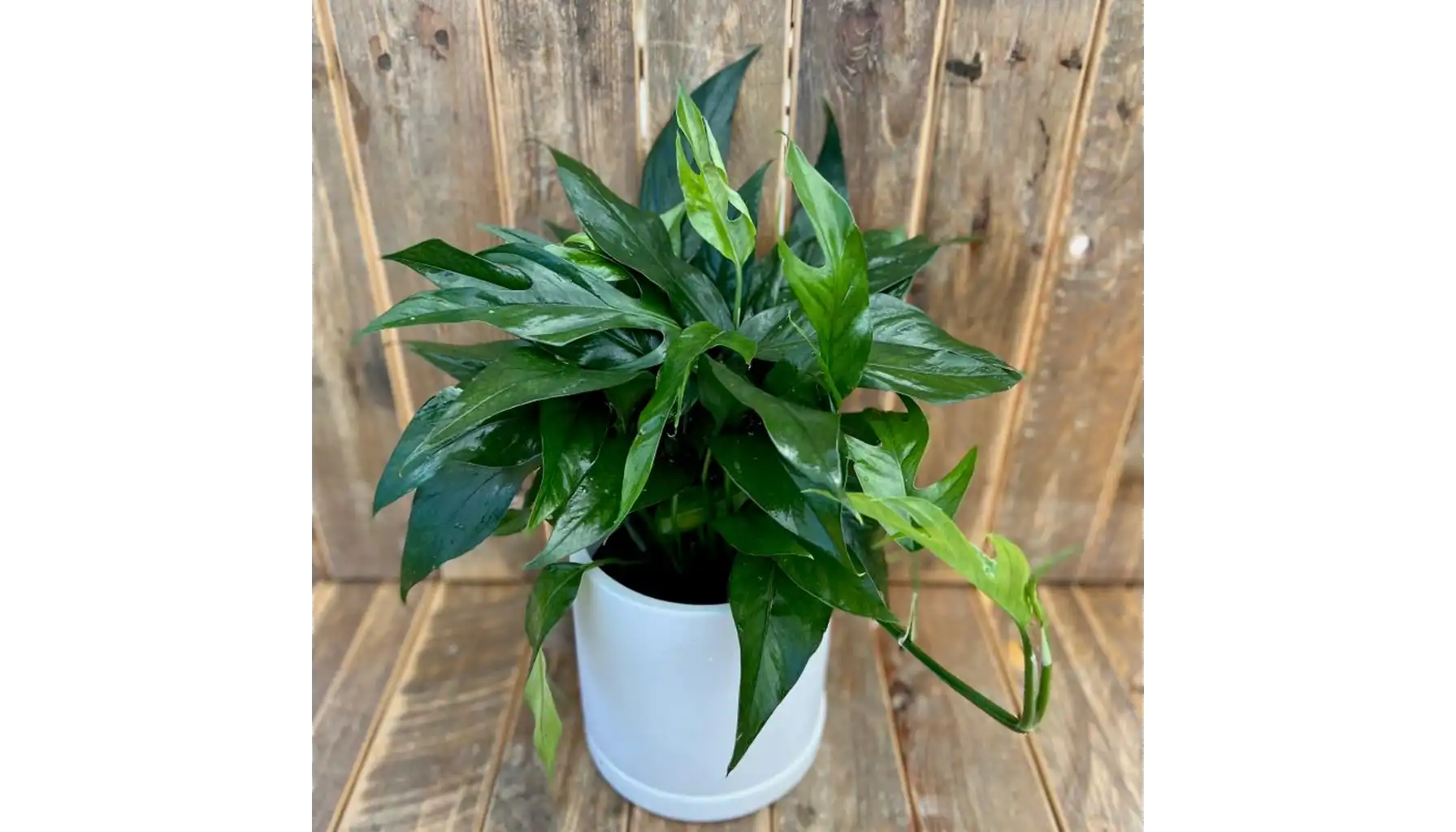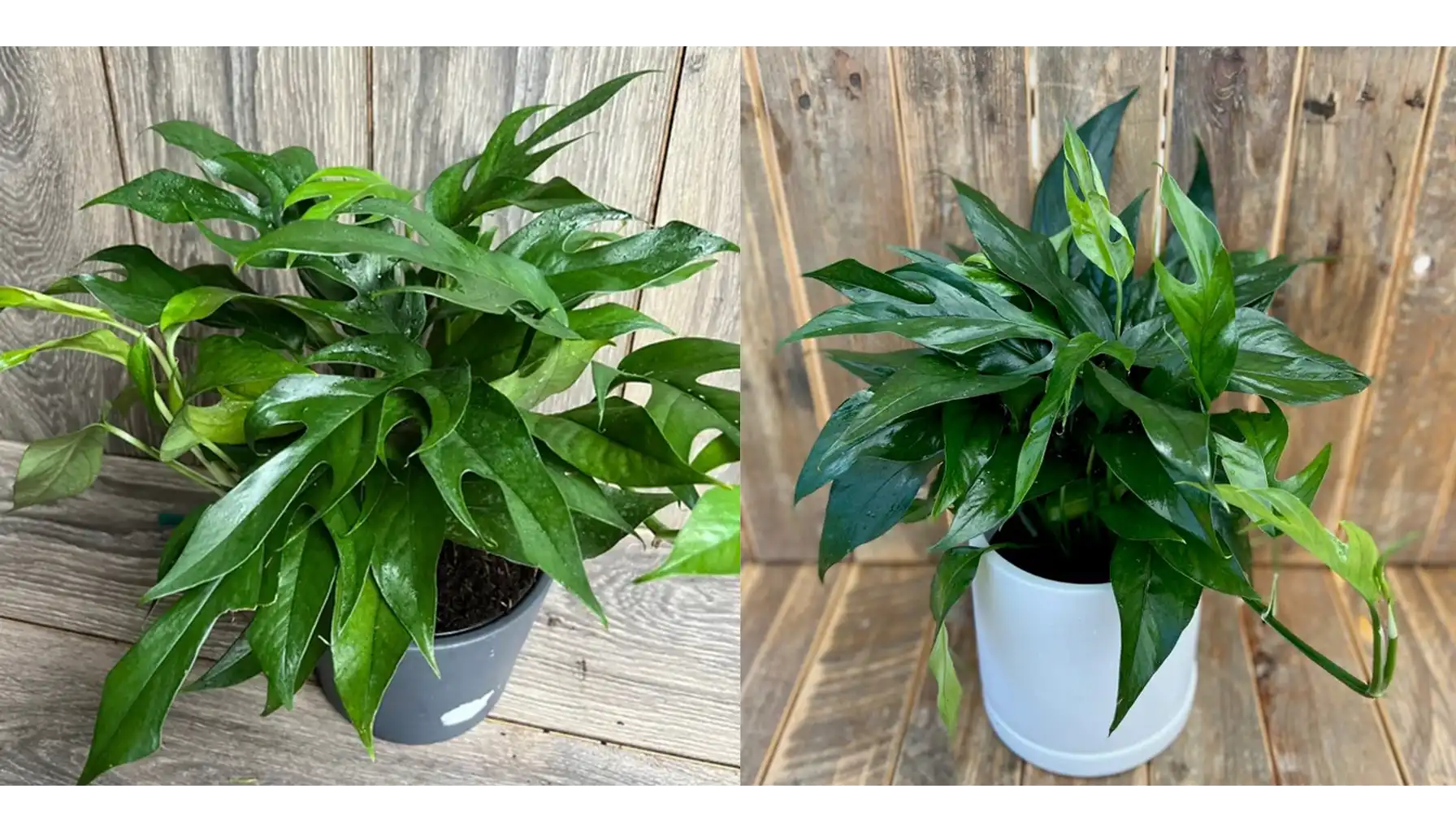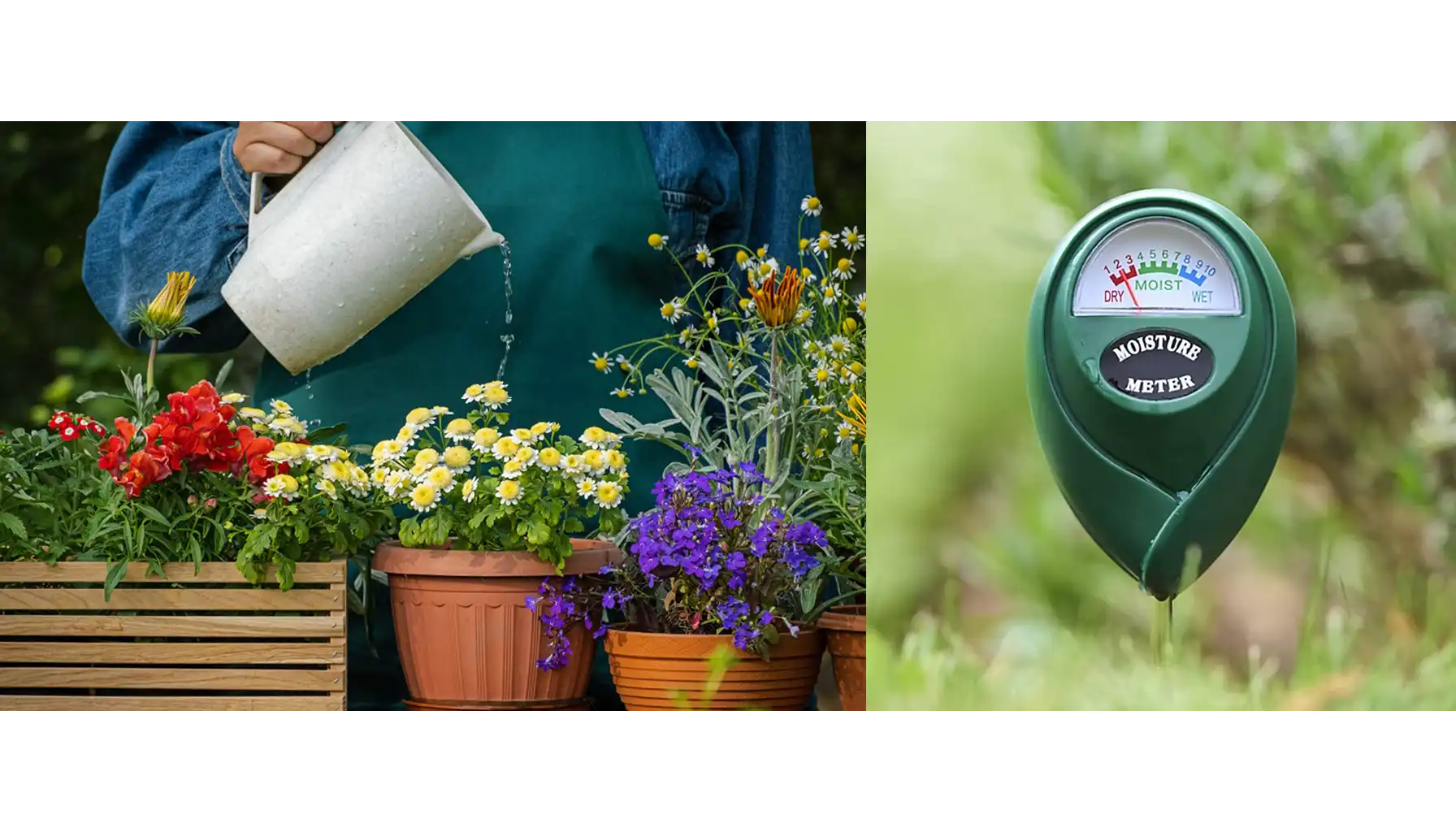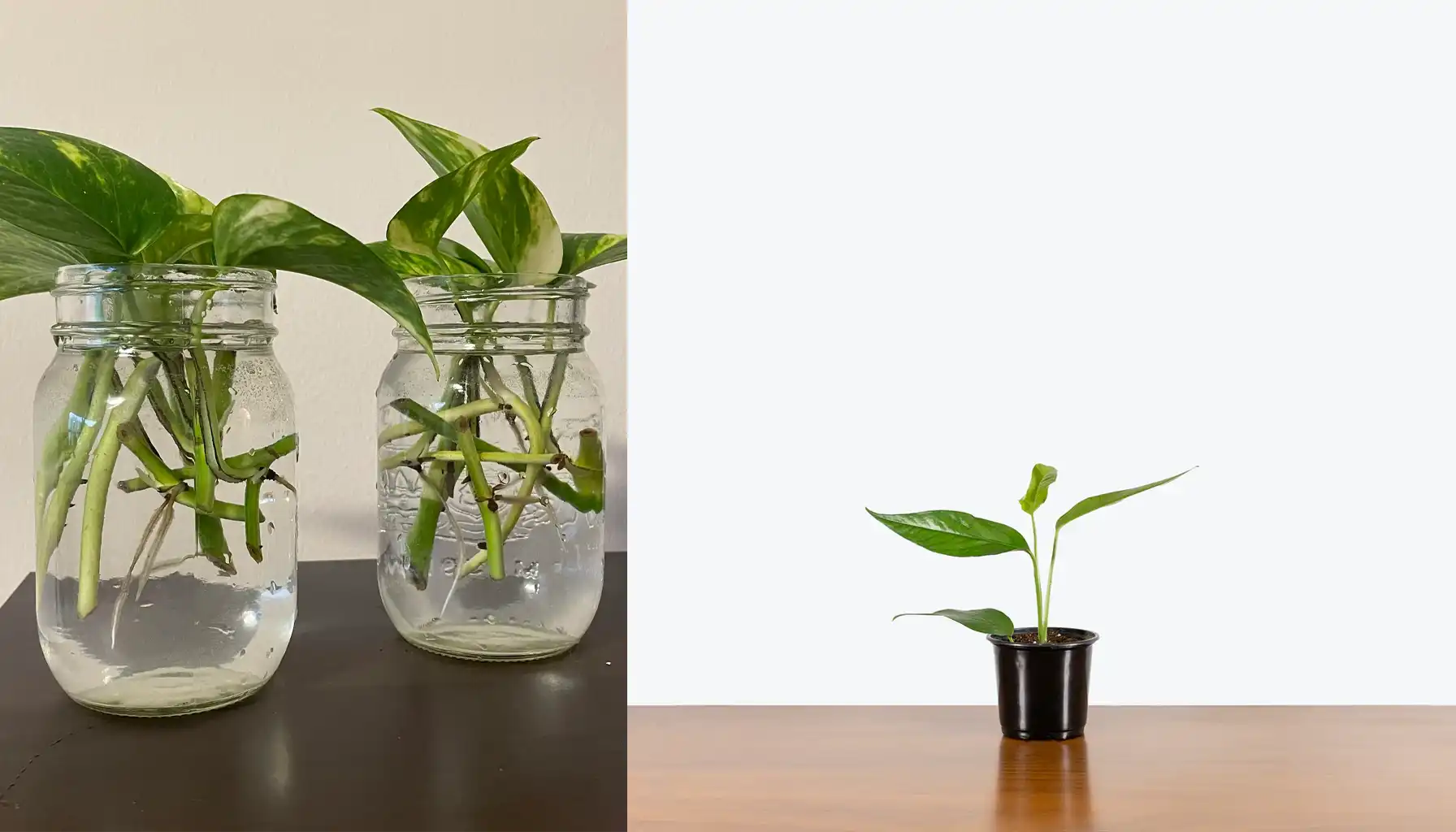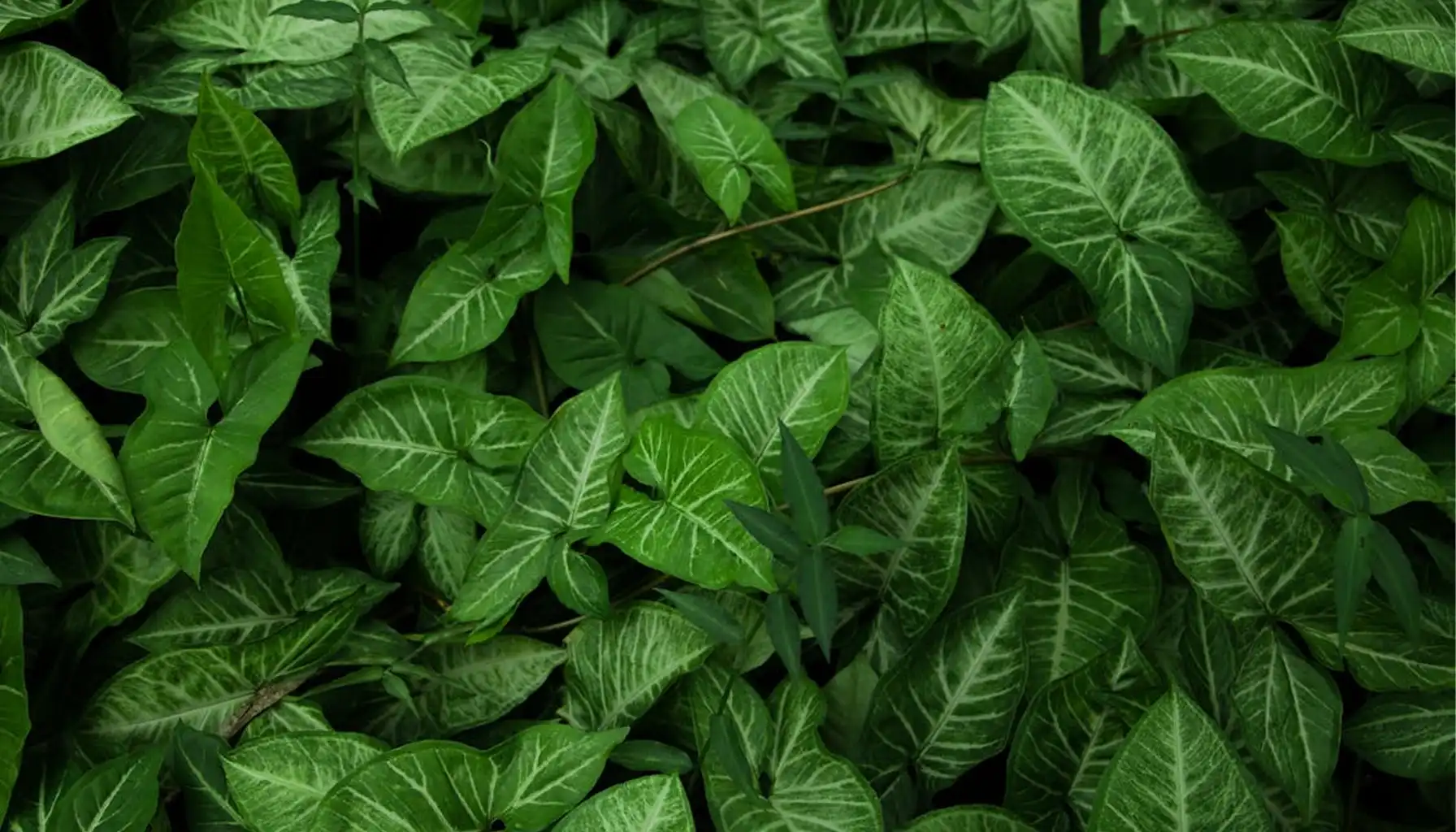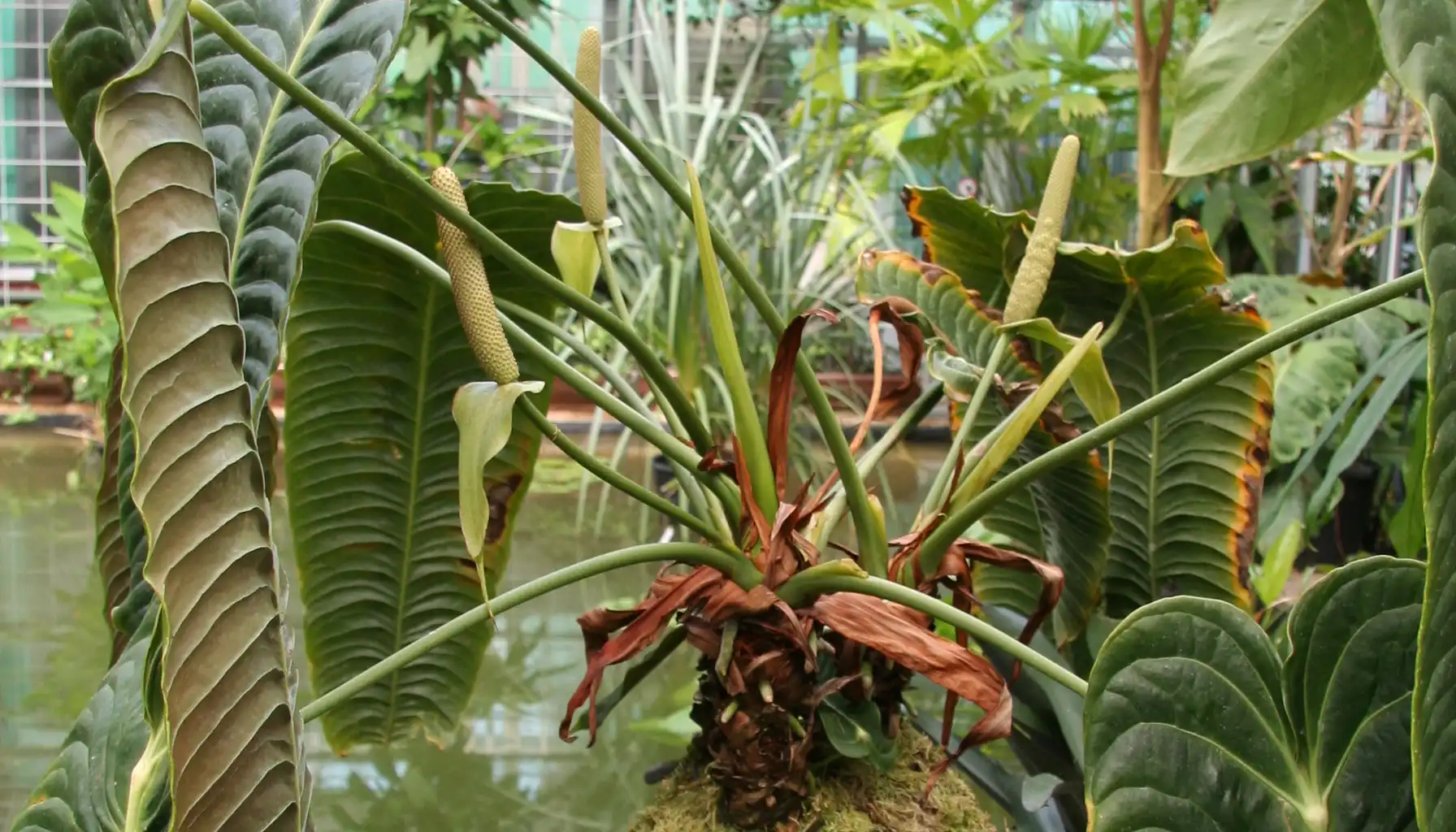It’s compact, beautiful, and it is blue. Well, more like green with a hue of blue. What you see is a Baltic Blue Pothos, a plant that has skyrocketed in popularity recently.
Here you will discover everything you need to know about the Baltic Blue Pothos plant, from care requirements to buying one for yourself.
Have you ever looked outside and thought: What plant is this? Today, you don’t have to meticulously consult botanists and browse encyclopedias. Apps can help you identify the plant in a few seconds.
About The Blue Baltic Pothos
The first thing you need to know about this shrub is that it's a relatively recent cultivar. While it existed for a relatively long time, it was introduced to the wider public only in early 2022.
Family-wise, it comes from the Pothos genus, a family of shrubs that are grown in so many households nowadays.
Baltic Blue Pothos' scientific name is Epipremnum pinnatum Baltic Blue, which could be roughly translated to “feathered climbing plant”, which well describes the unique fenestrated foliage.
Pothos Blue Baltic Overview |
Feature | Details |
Origin | Tropical regions of Asia and Australasia |
Type | A perennial vine/climbing (or trailing) aroid |
Size | 6 feet tall or taller, but usually stays smaller indoors |
Life span | Can live for many years (decades) if properly cared for |
Leaf Colors | Rich green that develops a bluish or deeper blue-green cast with age |
Flowers | Exceptionally rare indoors and barely noticeable |
Propagation | Usually propagated via stem cuttings |
Toxicity | Toxic if ingested. Sap can irritate skin |
Special Features | Ornamental and has a rather unique blue hue |
Baltic Blue Pothos Care
While this shrub is a relatively new addition, the care requirements are not much different from any other common houseplant.
Would you like to grow a healthy Baltic Blue Pothos large shrub? Then follow these care requirements.
Light Requirements
The shrub prefers bright, indirect light. This way it reaches Baltic Blue Pothos' mature stage faster, develops a more bluish colour, and fenestration (leaf splitting).
While Pothos can tolerate lower light, its growth will be slower, leaves smaller, and color less blue.
Direct sunlight is also not ideal, as it can scorch leaves or fade the blue tone.
All in all, you should choose the east-facing window with good air flow, and you won't have to worry about going wrong.
Water and Humidity Requirements
How often should you water your plants? Once a week should be enough, and if your climate is hot, twice a week.
As a rule of thumb, you should water the shrub when the top 1–2 inches of soil are dry. Avoid soggy soil, as overwatering can cause root rot. Pothos tolerates occasional dryness better than constant wetness.
Like many aroids, it prefers moderate to high humidity (above 50%). If your room air is dry, use a humidifier, pebble tray, or group moisturizing plants together.
Temperature Requirements
The shrub typically thrives in 65–85°F (18–29°C). You should avoid temperatures below 55°F (13°C).
In winter, the plant stops growing and goes into hibernation. During the winter, keep this shrub away from cold drafts or direct air conditioning.
Soil Requirements
Use a well-draining mix with potting soil, perlite, and bark. This mix works well with most aeroids.
Make sure your pot will have good drainage holes. This will help against overwatering and should be a must-have for almost any flora, from Areca Palm to Cacti.
Fertilizer Requirements
Feed this shrub every 4–6 weeks in spring and summer with a balanced, diluted houseplant fertilizer. Reduce feeding in fall and winter. The shrub is hibernating in winter and won’t grow anyway.
Propagation Guide
Stem cutting is probably the most popular propagation method nowadays. It is very fast compared to "traditional" seed propagation. You don’t need to wait for the flower to start blooming (and flowers won’t bloom indoors anyway).
Here is a step-by-step guide:
1. Select a Healthy Vine
2. Make the Cut
Take a pair of clean, sharp scissors or pruning shears. Cut just below a node (about ¼ inch below it).
Each cutting should have at least 1–2 nodes and one healthy leaf.
Remove the bottom leaf so that the node will be submerged in water.
3. Place in Water
Put the cutting in a glass or jar of clean, room-temperature water. The jar with the cutting should stay in bright, indirect light.
Make sure at least one node is underwater. Other leaves should stay above water.
4. Wait for Roots to Grow
Roots begin forming in 1–3 weeks, depending on warmth and light.
Change the water every few days to prevent bacteria buildup.
5. Transfer to Soil
Once the roots are about 2–3 inches long, replant the cutting in a pot with a well-draining mix (soil + perlite + bark).
In a week, the shrub should settle in the pot. While it’s actively growing, try to keep it in slightly humid conditions.
Toxicity and Safety
Like many Pothos, Baltic Blue is toxic if ingested by pets or humans.
The toxicity comes from calcium oxalate crystals (raphides), which can irritate the mouth, throat, drooling, vomiting, difficulty swallowing, etc. The sap that may be secreted if you cut the plant can also mildly irritate your skin. Therefore, it’s best to keep children and pets away from the shrub.
While the shrub is not a deadly toxin, you still should handle it carefully.
Blue Pothos Benefits Owners
This shrub is an ornamental plant first and foremost, grown for beauty. And yet there’s more to it than just good looks.
Category | Details |
Air Quality | Purifies indoor air by absorbing common toxins such as formaldehyde, benzene, toluene, and xylene. Helps increase oxygen levels. |
Well-being | Reduces stress and boosts mood. The blue-green foliage creates a calming atmosphere. Caring for it promotes relaxation and mindfulness. |
Humidity | Adds natural moisture. Releases water vapor through transpiration, improving indoor humidity and air comfort. |
Aesthetic Appeal | Visually striking foliage. Blue-green leaves with early fenestrations give a tropical, elegant appearance that complements many styles. It can also be used as a Baltic Blue Pothos climbing plant. |
Ease of Care | Beginner-friendly. Tolerant of low light, irregular watering, and varying humidity. Grows quickly and adapts well to indoor conditions, saving your time. |
Propagation | Simple to root from cuttings in water or soil, making it ideal for expanding your collection and possibly even selling the saplings. |
AI Plant Finder
AI Plant Finder is a mobile app designed to identify plants and provide care advice using Artificial Intelligence. The app analyzes photos of plants and offers information about their species, care needs, and potential problems.
Let’s have a more extensive look at the main features:
Plant Identification: You can take or upload a photo of a plant, and the app will analyze it to identify the species and provide details such as its common name, growth habits, and care requirements.
Disease and Pest Diagnosis: The app uses image recognition to detect potential problems like pests, fungal infections, or nutrient deficiencies. It then suggests possible causes and treatment ideas.
Care Guidance: Once flora is identified, the app provides care tips, including how much light, water, and fertilizer the plant needs, and any pruning or repotting recommendations.
Light Meter: The app includes a feature that measures how much light a specific spot in your home receives. This helps users decide whether that location is suitable for a particular plant.
Reminders and Alerts: Users can set up notifications for watering, fertilizing, and other routine care tasks. This feature helps ensure plants receive consistent attention.
AI Plant Finder is free and available for both iOS and Android devices.
FAQ
Is There a Variegated Baltic Blue Pothos?
No, there is currently no true variegated form of the Baltic Blue. This variety is known for its rich blue-green leaves that naturally deepen in color as the plant matures, but it does not display variegation (patterns of white, yellow, or lighter green) like some other Pothos types. Perhaps in the future we will have new cultivars.
Where Can You Find Baltic Blue Pothos for Sale?
Baltic Blue Pothos are relatively easy to find nowadays. Though just a few years ago, it was expensive and scarce. You can usually buy it at major plant retailers and garden centers (such as Home Depot, Walmart, or local nurseries) or through online plant shops and marketplaces (Etsy, The Sill, Amazon, or Costa Farms’ website)
What Is Fenestration for Pothos?
Fenestration is a foliage structure in which mature leaves develop natural splits or holes. Fenestration is a sign of healthy, vigorous growth. The best fenestration appears when the plant receives bright, indirect light and has good humidity and warmth, typically above 60% humidity and around 70–80°F (21–27°C).
Related AI Plant Finder Posts
